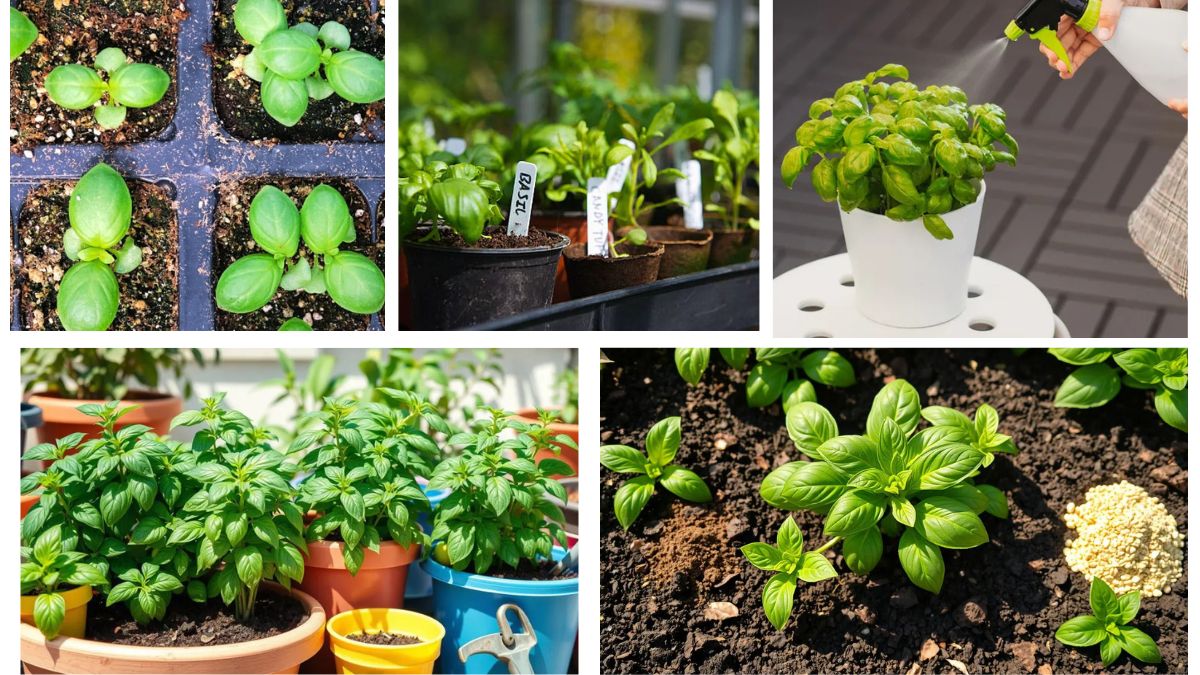Basil, with its vibrant leaves and aromatic presence, is one of the most beloved culinary herbs worldwide. Whether it’s the heart of an Italian pesto, a Thai stir-fry, or a refreshing garden salad, fresh basil is a staple in home kitchens and herb gardens alike. To keep basil lush, flavorful, and productive, proper fertilization plays a vital role. But a common question arises for gardeners and herb enthusiasts: “How much fertilizer is safe for basil plants?”
Like many herbs, basil thrives on balanced nutrition — too little fertilizer can lead to weak, stunted plants, while too much can harm growth, flavor, and overall plant health. In this comprehensive guide, we’ll explore how to fertilize basil safely, covering recommended fertilizer types, application rates, frequency, and essential care tips.
Why Fertilizing Basil Matters
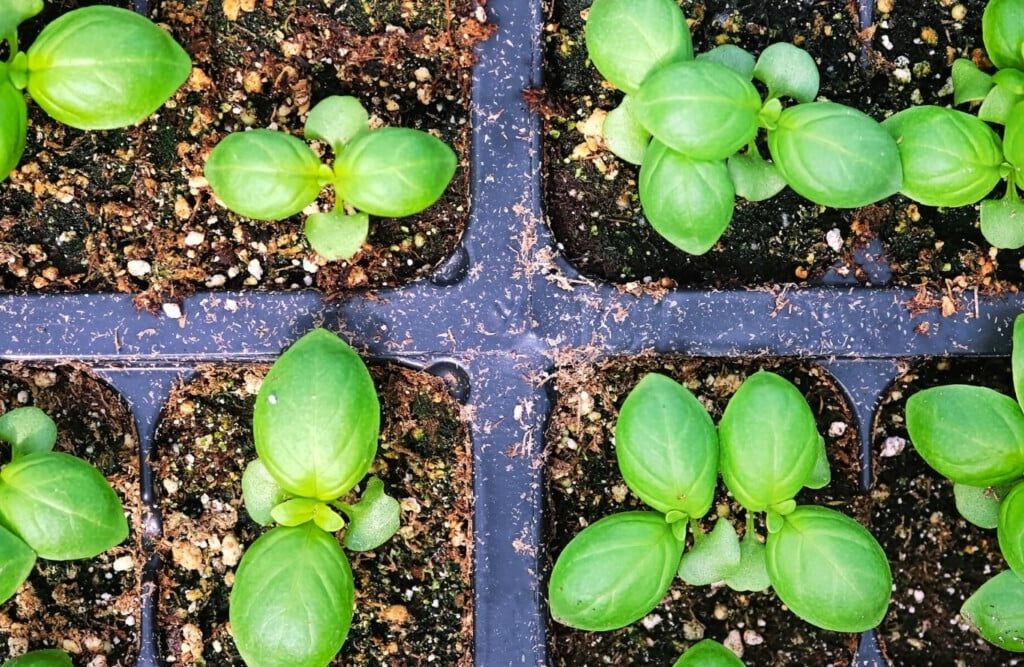
Basil grows vigorously, especially in warm, sunny conditions. As a fast-growing herb, it quickly consumes nutrients from the soil, which can deplete its growth potential if not replenished. Proper fertilization ensures:
- Healthy, leafy growth
- Rich, aromatic flavor
- Resistance to pests and diseases
- Consistent harvests throughout the growing season
However, unlike heavy-feeding vegetables like tomatoes or peppers, basil doesn’t need large quantities of fertilizer and can actually lose its signature taste if overfed.
How Much Fertilizer Does Basil Need?
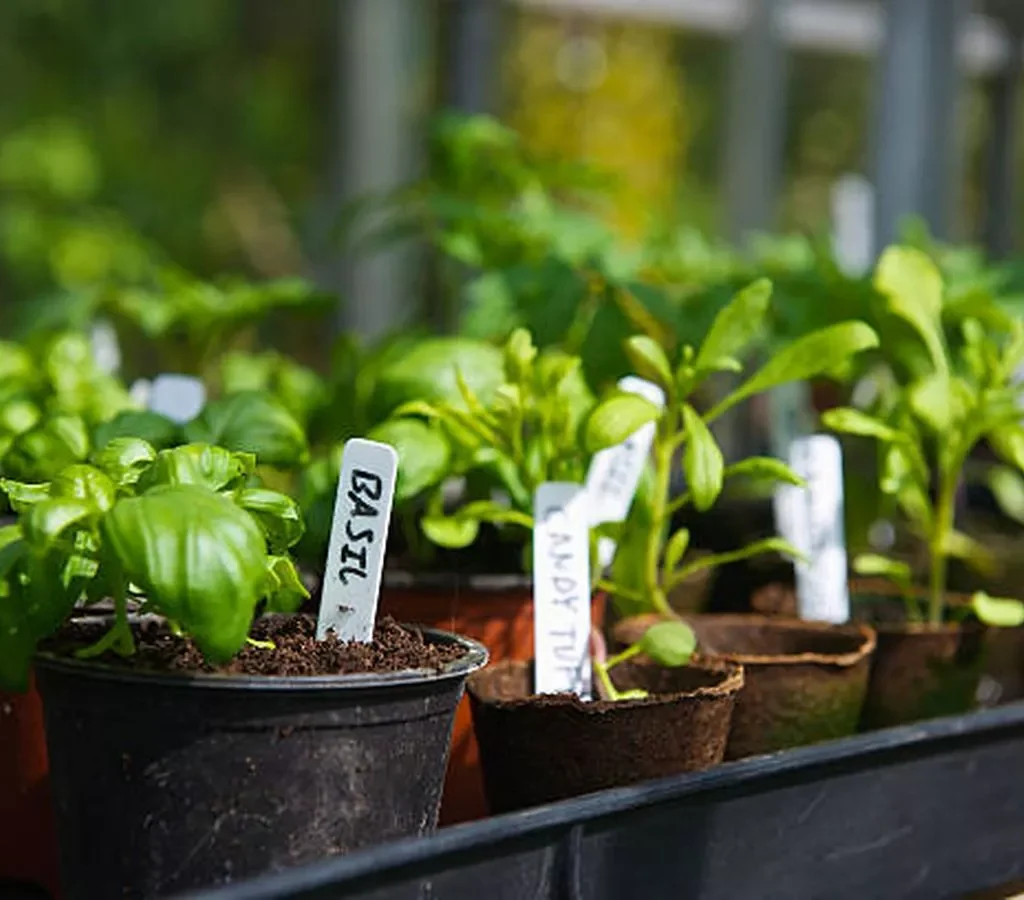
Basil is a light to moderate feeder. The exact amount of fertilizer depends on the type of fertilizer you use, the plant’s growing stage, and whether it’s grown in the ground or in containers.
General Guideline:
- Liquid fertilizers: Dilute to half-strength and apply every 2–4 weeks during active growth.
- Granular fertilizers: Use at a rate of 1 tablespoon per square foot of soil, applied every 4–6 weeks.
- Slow-release fertilizers: Apply once at planting time and replenish midway through the season as directed on the package.
Important: Always err on the side of less. Basil prefers a lean soil environment — too much fertilizer promotes excessive, lush growth with weaker, less aromatic leaves.
Types of Fertilizers for Basil Plants
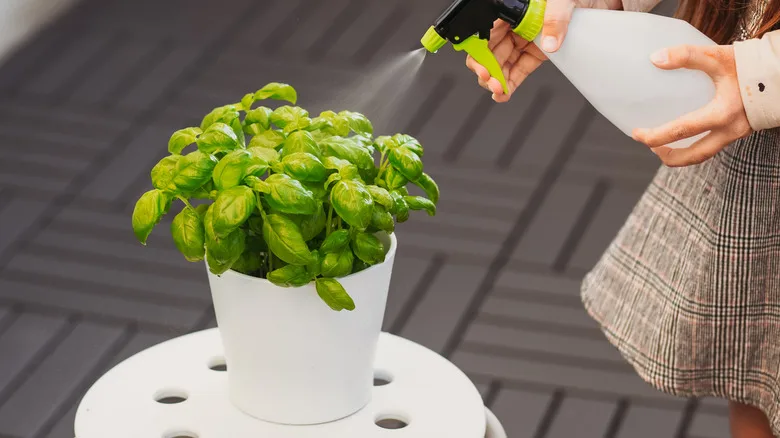
Choosing the right fertilizer ensures your basil stays healthy without overfeeding.
1. Liquid Fertilizers
Ideal for quick nutrient delivery. They’re diluted in water and applied to the soil or as a foliar spray.
Recommended types:
- Balanced organic liquid fertilizers (like fish emulsion or seaweed extract)
- Liquid compost tea
Dilution: Mix at half the recommended strength for herbs.
2. Granular Fertilizers
These slow-release granules provide steady nutrients over time.
Best NPK ratio: 5-5-5 or 10-10-10.
Application: Lightly work into the soil surface around the base of the plant. Use 1 tablespoon per plant or per square foot.
3. Slow-Release Fertilizers
Capsulated fertilizers slowly release nutrients over several months, reducing the need for frequent applications.
When to use: At planting time, then again mid-season.
4. Organic Fertilizers
Great for maintaining soil health and avoiding chemical buildup.
Options include:
- Aged compost
- Worm castings
- Fish emulsion
- Blood meal (high nitrogen)
- Seaweed extract (for trace minerals)
When to Fertilize Basil
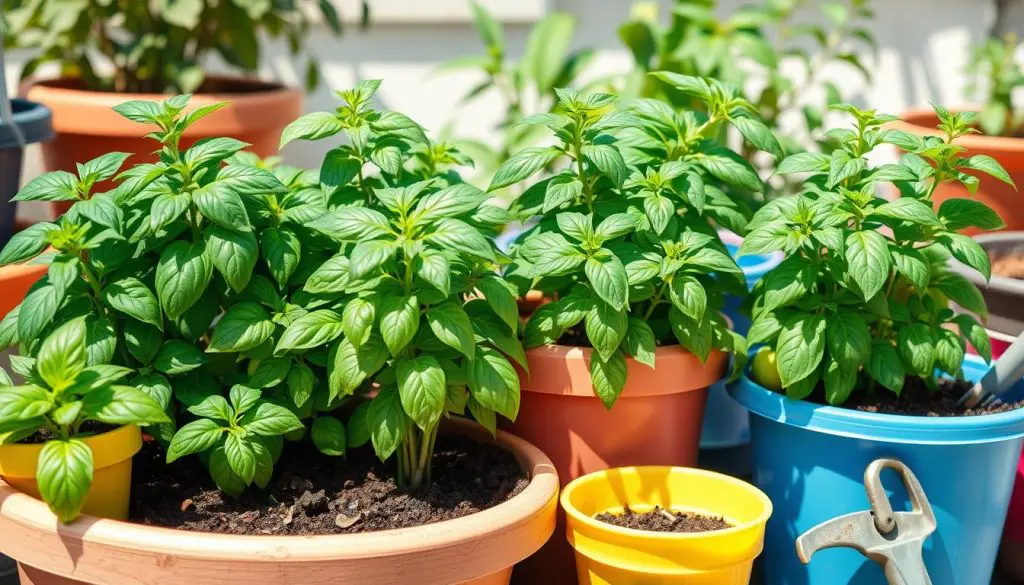
Proper timing maximizes growth and prevents stress.
At Planting Time:
- Mix aged compost or slow-release organic fertilizer into the soil before planting.
During Active Growth (Spring–Summer):
- Liquid feed every 2–4 weeks for container basil.
- Granular or organic fertilizers every 4–6 weeks for garden-planted basil.
Avoid Fertilizing in Late Season:
Once flowering begins, reduce or stop fertilizing to maintain strong leaf flavor.
Fertilizing Basil in Containers vs. Garden Beds
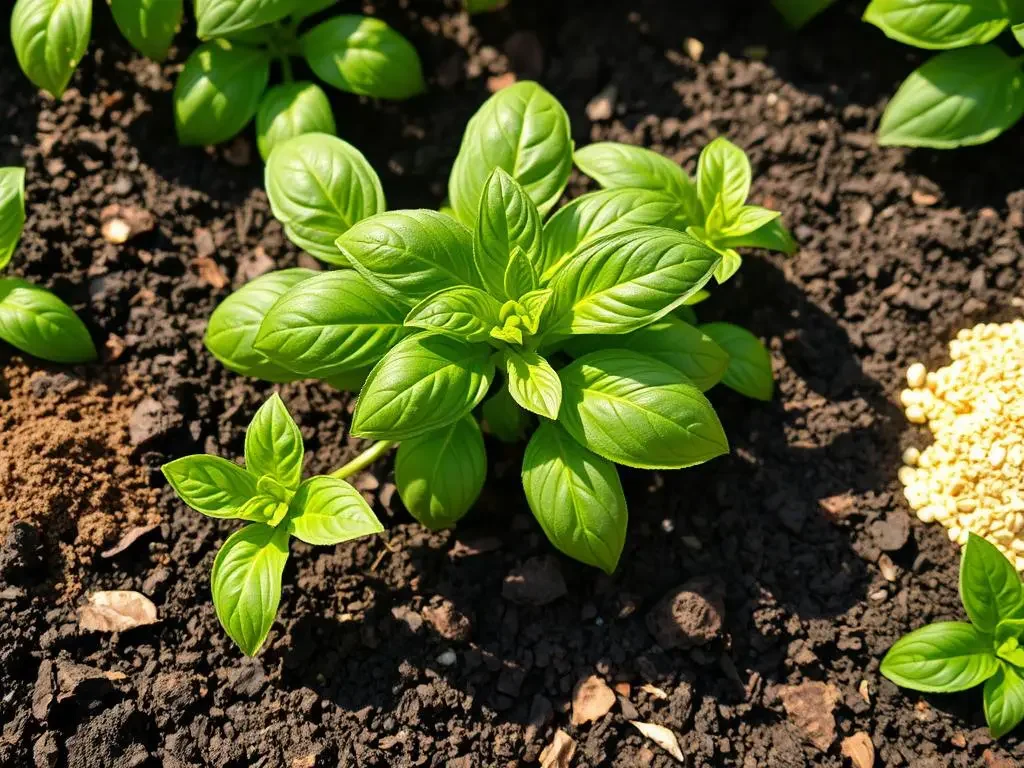
In Containers:
Potted basil dries out quickly and loses nutrients faster than in-ground plants.
- Use diluted liquid fertilizer (half-strength) every 2–3 weeks.
- Apply organic slow-release pellets at planting and replenish mid-season.
Note: Always ensure good drainage to prevent salt buildup from fertilizers.
In Garden Beds:
Garden basil benefits from richer, deeper soil that retains nutrients longer.
- Apply granular fertilizer or compost at planting.
- Top-dress with compost or granular fertilizer every 4–6 weeks.
- Water thoroughly after fertilizing.
Signs of Over-Fertilized Basil
Too much fertilizer can harm basil’s flavor, texture, and appearance.
Symptoms include:
- Soft, overly lush, floppy leaves
- Pale, yellowish leaf tips
- Reduced aromatic oils (bland flavor)
- Burned or scorched leaf edges
- Excessive growth with fewer leaves
If over-fertilized:
- Water the soil deeply to flush out excess salts.
- Stop fertilizing for a few weeks.
- Remove any damaged leaves.
Best Natural Fertilizers for Basil
For gardeners preferring organic or natural options:
- Compost tea: Adds nutrients and beneficial microbes.
- Fish emulsion: High in nitrogen, promotes leaf growth.
- Worm castings: Enrich soil with balanced nutrients.
- Banana peel water: Provides potassium for stronger stems and leaves.
- Seaweed extract: Boosts plant immunity and stress resistance.
These options reduce the risk of overfeeding and improve soil health.
Fertilizing Basil Seedlings and New Plants
Young basil seedlings need minimal fertilization.
At planting time:
- Mix a small amount of compost or worm castings into the soil.
Once established (2–3 weeks after sprouting):
- Apply diluted liquid fertilizer (quarter-strength) every 2 weeks until transplanting.
How Environmental Factors Affect Fertilization Needs
- Hot, dry climates: Basil grows faster and uses up soil nutrients quickly — fertilize more frequently (every 2 weeks).
- Cool, damp climates: Growth is slower — fertilize every 4 weeks.
- Poor soils: Benefit from light monthly feeding with organic fertilizers.
- Rich, compost-amended soils: May require fertilizing only once or twice during the growing season.
Quick Basil Fertilizer Guide
| Fertilizer Type | Amount/Rate | Frequency |
|---|---|---|
| Liquid (half-strength) | 1/2 of label recommendation | Every 2–4 weeks (containers) |
| Granular (balanced 5-5-5) | 1 tbsp per square foot/plant | Every 4–6 weeks (garden) |
| Slow-release (organic) | Per label instructions | At planting & mid-season |
| Compost/Worm castings | 1–2 inches around plant base | At planting & monthly top-up |
Conclusion
To summarize, basil plants thrive with light, balanced fertilization, receiving just enough nutrients to encourage leafy, flavorful growth without promoting excessive, bland foliage.
Liquid fertilizers diluted to half-strength, applied every 2–4 weeks for containers and every 4–6 weeks for garden beds, are typically sufficient. Organic options like compost, worm castings, and fish emulsion are safe, effective choices that nourish both the plant and the soil.
The key is moderation — too much fertilizer can harm both plant health and the aromatic oils responsible for basil’s signature flavor. By learning to read your basil’s growth cues and adjusting your fertilizing routine accordingly, you’ll enjoy a season-long supply of fresh, vibrant leaves for your kitchen and garden.
